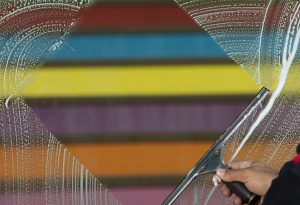
As I watch businesses embrace and struggle with new/renewed hybrid work realities, I am convinced more and more of the growing need for intentional culture. Our biggest adversary, besides the post-Covid changes and the existential and industry forces facing every business, we must contend with our own brains. It’s us vs. us. But most organizational change efforts don’t zone in on that quite so personally. Our brains are hardwired to resist change, it’s called Gleicher’s Formula. Thank you for your service, amygdala?
Culture Change Isn’t Sexy
Culture shift, its actions, its nuances, its impact on people to personally change their behavior (at all levels of the organization) is hard work. I see organizations shy away from the introspective and observational work of looking inward first. Instead they opt for what’s sooo much easier: license a technology solution, launch a new program without inventorying what’s already happening, take action without thinking things through or testing among a few employees who’ll be deeply impacted. Stepping back and evaluating where culture is and isn’t working doesn’t have the endorphin rush of a launch. It’s not sexy to be thoughtful and analytical when you’re mapping your organization’s future. It can feel like you aren’t getting anything done.

Is There a Problem: Get Curious
Without intentional culture work, your company may have a default culture. The negative effects may not be immediately visible, but a neutral culture can be a vulnerability in the war for talent. In the book, Execution: The Discipline of Getting Things Done, the authors share how leader behaviors are replicated on down through an organization. How do your leaders live the business of your organization? Do they embody and support organizational values through behaviors or the behaviors of their subordinates? There are many juicy organizational challenges I’ve observed and advised on, especially for challenges internal communicators face:
- Inconsistent employee experience across locations
- C-suite leaders out of alignment with each other, making and taking action on their own
- Psychologically unsafe environments
- An inconsistent employee experience across locations–some teams and tribes are great; others, not so much
- Organizations that didn’t realize they would fail a change-readiness assessment.
What’s Your Middle Management Culture?
There is also growing research into the pivotal role middle managers play. Harvard Business Review calls them the new MVPs. Middle managers are often not fully empowered to effectively guide, teach and enforce behavior changes, or they’re given tools that may or may not fit in with their work supervising employees who aren’t digital, may not have access to digital communications or more. Companies also overlook asking middle managers about what else their teams are living and supporting every day in their work. Simultaneous change initiatives are a huge blindspot for most C-suite leaders.
A 2019 Grant Thornton Return on Culture study cited the connections between employee engagement, talent retention, collaboration, and customer satisfaction with revenue growth. As in: they help or hinder it. Employee listening initiatives are a great way to start to map these factors together in your company. Permanent listening programs to complement company-wide surveys ongoing are a better investment, especially if particular areas of the business are identified as most in need of a culture shift.
Employee ideas are the fuel of smart transformation. They are your true partners if you want to take a human-centered approach and co-create a new employee experience with intentional culture.
